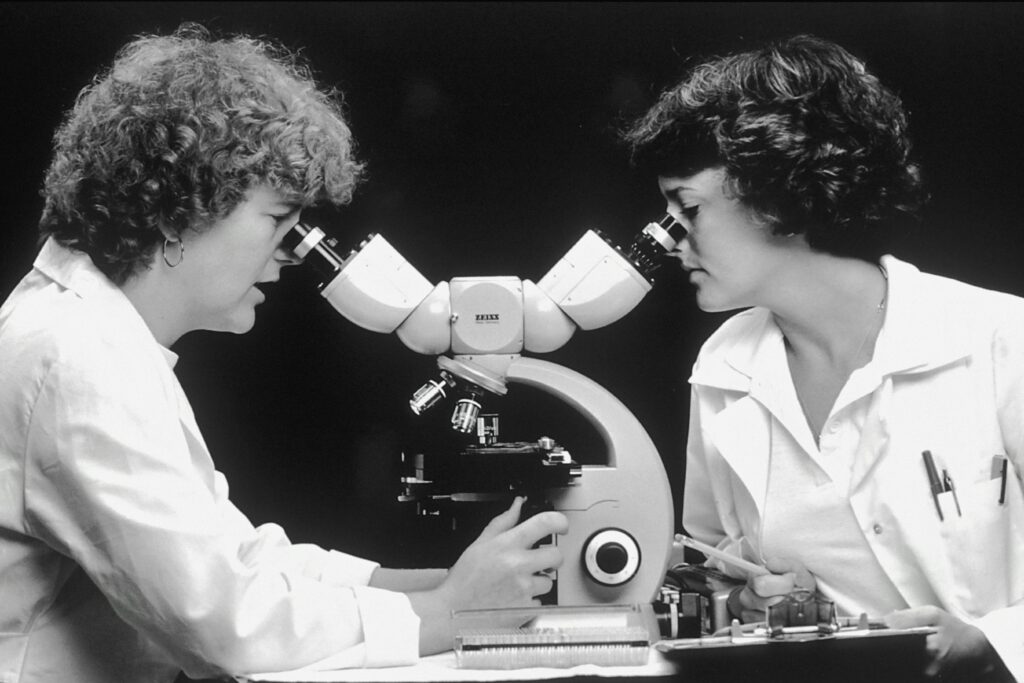
For those of you who have had breast cancer or loved someone with breast cancer, I see you, and I am sending you love. Both my mother and mother-in-law are breast cancer survivors and last year we lost my aunt to the disease. I dedicate this article to them and all the people reading this whose lives have been impacted by this cancer.
I frequently hear remarks about how breast cancer seems to affect everyone, either directly or indirectly. Many ask, “Why is this happening?” The incidence of breast cancer is indeed rising. In this article, I’ll outline the risk factors within your control and take a closer look at screening options.
Breast Cancer Risk Factors
In reality, only a small percentage (5-10%) of breast cancers are linked to a genetic predisposition such as the BRCA1 and BRCA2 mutations. For the majority, various lifestyle and environmental factors contribute to the disease. In functional medicine, we recognize that different people may arrive at the same diagnosis from different places. While one woman may have high-stress levels and insulin resistance that contribute to breast cancer, another may have higher alcohol intake and genetic variations in estrogen metabolism, both leading to the same disease but from different origins. By understanding each individual’s unique circumstances, we can develop personalized approaches to healing.
A common theme in many (but not all) breast cancers is estrogen. Estrogen is often described as a “pro-growth” hormone because it stimulates the growth and development of tissues, particularly in the breast and uterine lining. This is essential during puberty, the menstrual cycle, and pregnancy. However, when estrogen levels are too high or unopposed, it can lead to excessive tissue growth, increasing the risk for conditions like breast cancer, endometriosis, fibroids, and endometrial cancer.
That’s where progesterone comes in. Progesterone is a hormone that works to counterbalance estrogen’s growth-promoting effects. It helps stabilize the uterine lining and slows down the tissue growth that estrogen promotes, creating a healthy hormonal balance. Without enough progesterone, estrogen can dominate, leading to symptoms like breast tenderness, irregular periods, headaches, and a higher risk for hormone-driven cancers.
The reason why factors such as obesity, sedentary lifestyle, alcohol intake, pesticide exposure, oral birth control, plastic exposure (BPA, phthalates), and antibiotic use are linked to an increased risk of breast cancer, is because of the way they impact estrogen in the body. Anything that increases estrogen without the proper balance of progesterone, can increase the risk of developing estrogen-driven conditions including breast cancer.

The Estrogen Pathways:
Good, Bad, and Ugly
Estrogen doesn’t just circulate in one form. It breaks down into different metabolites: 2-OHE1, 4-OHE1, and 16a-OHE1. These are often referred to as “the good, the bad, and the ugly.”
- 2-hydroxyestrone (2-OH): A protective estrogen metabolite linked to a lower risk of breast cancer.
- 4-hydroxyestrone (4-OH): A potentially harmful metabolite associated with DNA damage and oxidative stress, both of which increase cancer risk.
- 16α-hydroxyestrone (16-OH): A harmful metabolite that promotes cell proliferation, increasing the likelihood of estrogen-sensitive cancers like breast cancer.
For simplicity we can call them the 2, 4, and 16a metabolites. We want to increase the protective 2 production while lowering the harmful 4 and 16a production.
| Factors the increase 2 metabolites | Factors that increase 4 metabolites | Factors that increase 16a metabolites |
|---|---|---|
| · exercise · cruciferous vegetables (broccoli, cabbage, kale, etc.) · flaxseeds · green tea · berries · high fiber diets · adequate B vitamins · omega 3 fatty acids · managing stress | · chronic inflammation · environmental toxins · alcohol consumption · tobacco smoke · BPA · high fat diets | · obesity · insulin resistance · hormonal imbalances like PCOS · steroid medications · pesticides |
Lifestyle Influences on Breast Cancer Risk
· Lifetime exposure to estrogen: Those that start their menstrual cycle at a young age and/or go through menopause at an older age increases their lifetime exposure to estrogen. Though this is not something you can control, it is important to consider it when assessing risk.
· Alcohol intake: The liver processes both alcohol and estrogen. When your liver is busy processing alcohol in order to get rid of it, it has less resources and nutrients to process estrogen. This leads to an increase in estrogen in your system and can contribute to an increase in the potentially harmful 4 metabolites of estrogen. Alcohol and Cancer Risk
· Overweight and sedentary lifestyle: These play a role because fat cells produce estrogen by a process called aromatization in which an enzyme called aromatase converts testosterone into estrogen, increasing the levels in the body. This is why medications like aromatase inhibitors (e.g., Letrozole) are often used in breast cancer treatment to reduce estrogen production.
· Toxin exposure: Many toxins such as pesticides, phthalates, BPA can either mimic estrogen in the body or disrupt hormone balance, promoting estrogen levels. The body has an innate ability to detoxify itself, but it has its limits. When we are exposed to hormone disrupting chemicals in our environment, through beauty and hygiene products, food, etc., our detoxification systems can become overwhelmed and our overall toxic burden can build up over time. This problem is worsened if we are not getting detoxifying nutrients in our diet (from plants) and adequate water intake. For the final stage of detoxification to work properly, we need to be breathing (think exercise and breathwork), sweating, moving our bowels and urinating on a regular basis. There are a couple vulnerable times in a woman’s life when toxin exposures can increase her risk of breast cancer more than other times. This is during the times mammary glands are developing- when she is in her mother’s womb, especially during the first trimester and the time leading into and during puberty. I question whether this fact especially is fueling the breast cancers we see in women in their 20s-30s.
· Antibiotic use: Believe it or not, your gut plays a huge role in estrogen metabolism. By taking antibiotics, the balance of the microbes in the gut can be disrupted which can lead to an increase in certain bacteria that make an enzyme called beta glucuronidase. This enzyme changes the estrogen molecule and allows it to be reabsorbed into the bloodstream instead of being pooped out. Your ovaries don’t know about this and do not make enough progesterone to balance the higher levels of estrogen.
· Oral birth control and other synthetic hormones: Premarin, which is a form of estrogen derived from horse urine, is used in hormone replacement therapy. When it is processed in the body, it preferentially goes down the detrimental 4 and 16a metabolite pathways (see above). This is why it is very important to only use bioidentical hormones when using hormone replacement therapy. Unlike bioidentical progesterone, synthetic forms of progesterone like progestins can be pro-inflammatory in the body and enhance the proliferative (growth) effects of estrogen on breast tissue, increasing risk of breast cancer. Progestins can also alter estrogen metabolism promoting more 4 and 16a metabolites. Whether or not oral birth control increases the risk of breast cancer is a controversial topic, but the bottom line is that these medications were intended for shorter-term use than what they are used for nowadays. The longer women take these synthetic hormones, some for decades, the risk for breast cancer rises. Here is a well done study that examines this. Researchers state “They observed a 20% higher risk among women who were currently using or had recently used hormonal contraceptives than among those who had never used them, and the risk increased with a longer duration of use.”
There are also those risk factors beyond our control like family history of breast cancer that is often the main one that comes to mind. The above information is not an exhaustive list of modifiable risk factors but it starts to answer the question, why are we seeing so many breast cancer cases? Simply, because we are seeing more and more known risk factors. We are living in an obesity epidemic with 1/3 of American adults are affected by prediabetes or diabetes- i.e. insulin resistance. We are exposed to thousands of chemicals in our environment throughout our life cycles, including pesticides in our foods. Antibiotic and birth control use are mainstays in our culture and conventional medicine practices. Regular alcohol consumption and over consumption is often normalized.
Now, what can we do about this?
Screening Options for Breast Cancer
First, let’s talk about screenings. You might be aware that in recent years, the American Cancer Society (ACS) changed their recommendations for breast cancer screenings. Self-breast exams and even in-office breast exams are no longer recommended. The age for starting annual mammograms is now 45 instead of 40, with 40-44 year olds using shared decision making to decide if they should get them sooner. Biannual mammograms starting at age 55. Some women look forward to their mammogram as it gives them some peace of mind. Others complain about the discomfort and inconvenience and wonder if it is even worth it. I like what the ACS has to say about this- “Every life lost to cancer is important. But the fact is, even though mammography reduces deaths from breast cancer, it does not eliminate them, even in the age groups where it is agreed that women should be screened. The challenge of screening is maximizing the lifesaving benefits while minimizing its harms. These evidence-based guidelines represent the best current thinking on that balance.” My hope is that with more information, women can make this decision of balancing benefits and minimizing harm based on their own understanding of their risk factors. Here is a video that gives further perspective on the “math” around mammograms. Lazris & Rifkin’s Mammogram Theater

What Are the Alternative Screenings?
Mammograms have long been the standard screening tool for breast cancer, but they’re not without controversy. Some patients worry about radiation exposure or false positives leading to unnecessary procedures. While mammograms are still considered a valuable screening tool, there are alternatives and additional options to consider.
- Breast MRI: Often used for high-risk individuals, breast MRIs provide more detailed images, especially for those with dense breast tissue.
- Ultrasound: Particularly useful for evaluating dense breasts or specific lumps, ultrasound can be a complementary tool to mammography.
- Thermography: This alternative uses infrared imaging to detect heat patterns that could suggest inflammation or abnormal tissue growth without the exposure to radiation involved in mammography. It remains controversial due to less sensitivity compared to mammograms, but in a 2020 study, researchers found a high sensitivity and specificity. An important thing to consider when looking into thermography options is the experience of the clinician interpreting the results. It is always acceptable to ask how long someone has been practicing and sharpening this skill.
- Breast Self-Exams: While regular self-breast exams are not necessarily recommended by the ACS, it is never a bad idea to be familiar with your body. It is important to note not only presence or absence of a “lump” but also any unusual swelling in the breasts, characteristics of breast tenderness during your cycle, changes in skin or hair over the breasts, nipple discharge, breast changes that may correlate with supplement/medication/diet changes etc.
- Labwork: Serum and salivary hormone levels (estrone, estradiol, SHBG, DHEA testosterone, and progesterone) and/or urine metabolites of estrogen (the 2, 4, and 16a metabolites) can shed light on hormonal imbalances that can increase breast cancer risk. Some other markers to check include homocysteine, inflammatory markers, vitamin D levels, and 8OHDG. Genetic testing can be done to identify differences in methylation genes that affect estrogen. Stool testing can be done to look for beta-glucuronidase in the stool. Remember labs do not tell the complete story, and it is just as important to pair labs with symptoms and physical assessment findings.
Each method has its strengths and is appropriate in different contexts. It’s best to consider your risk factors and consult with your healthcare provider to develop a screening plan tailored to your needs.

Empowering Prevention: Lifestyle Choices to Lower Breast Cancer Risk
Here are some actionable steps you can take to lower your breast cancer risk. Some you may know already, and now hopefully have a better understanding of their significance.
- Nutrition: Eating a balanced, whole foods diet is one of the best ways to support your body’s ability to detoxify and regulate hormones. Focus on nutrient-dense foods like:
- Leafy greens and cruciferous vegetables (broccoli, cauliflower, kale, cabbage): These are packed with compounds that support estrogen metabolism, promoting the production of protective 2-OH estrogens.
- Berries and colorful fruits: Rich in antioxidants, they help combat oxidative stress and inflammation, both linked to cancer development.
- Flaxseeds: Contain lignans, which help regulate estrogen and reduce risk.
- Omega-3 fatty acids (found in fish like salmon and walnuts): Known for their anti-inflammatory properties.
- Green tea: Loaded with polyphenols, including catechins, which have been shown to reduce breast cancer risk.
- Soy and soy isoflavones (tofu and edamame).
- Turmeric/curcumin: Potent antioxidant with anti-inflammatory action.
- Exercise: Regular physical activity helps lower estrogen levels, improve insulin sensitivity, and reduce inflammation. Aim for at least 150 minutes of moderate-intensity exercise each week, which can include brisk walking, swimming, or cycling.
- Maintain a Healthy Weight: Since fat cells produce estrogen, maintaining a healthy body weight can reduce estrogen levels and lower breast cancer risk. Focus on a balanced diet, portion control, and regular physical activity to achieve and maintain a healthy weight. If you are struggling with where to start your weight loss journey, There are many lifestyle change programs in the area- most covered by insurance. Some of these in-person options even come with “insurance-covered” gym memberships.
- Reduce Alcohol Intake: Limit alcohol consumption, as it interferes with estrogen metabolism and increases levels of harmful estrogen metabolites linked to cancer. Stick to no more than one drink per day, or eliminate alcohol altogether if you’re at high risk. Research shows that there is no safe amount of alcohol intake when it comes to breast cancer risk. Try replacing alcohol with adaptogenic drinks like Recess or Curious Elixirs. You can even try one of the local kava kava bars popping up in NH.
- Supplements for Added Protection:
- Resveratrol: Found in red wine, grapes, and berries, resveratrol is a powerful antioxidant that may inhibit cancer cell growth and reduce estrogen’s negative effects on breast tissue. To actually get a therapeutic dose, you need to take this in supplement form.
- Vitamin D: Adequate levels of vitamin D have been associated with lower breast cancer risk. Consider supplementation if your levels are low.
- Melatonin: This hormone, often linked to sleep regulation, has shown potential in inhibiting the growth of breast cancer cells. High dose melatonin supplementation, specifically for high-risk individuals, may offer additional protection.
- DIM (Diindolylmethane): A compound found in cruciferous vegetables that helps promote the beneficial 2-OH estrogen pathway and reduce harmful estrogen metabolites, potentially lowering the risk of estrogen-related cancers.
- Calcium D-Glucarate: This supplement supports the body’s detoxification pathways, particularly in eliminating excess estrogen. It inhibits the enzyme beta-glucuronidase, which can otherwise allow estrogen to be reabsorbed into the bloodstream, helping to reduce the overall estrogen load in the body.
Visit Fullscript for our go-to’s.
- Stress Management: Chronic stress affects hormone balance and immune function. Incorporate daily relaxation practices like meditation, yoga, or deep breathing exercises to help reduce your stress levels. Apps such as Calm, Headspace, Wim Hof Method, and Othership offer guided meditations and breathwork.
By making these lifestyle adjustments, you can help your body better regulate hormone levels, reduce inflammation, and boost your overall health, ultimately lowering your risk of developing breast cancer. Additionally, with individualized testing and targeted supplementation we can impact how your body produces, metabolizes, and detoxifies estrogen. Please reach out for more information or assistance.




Read the Comments +